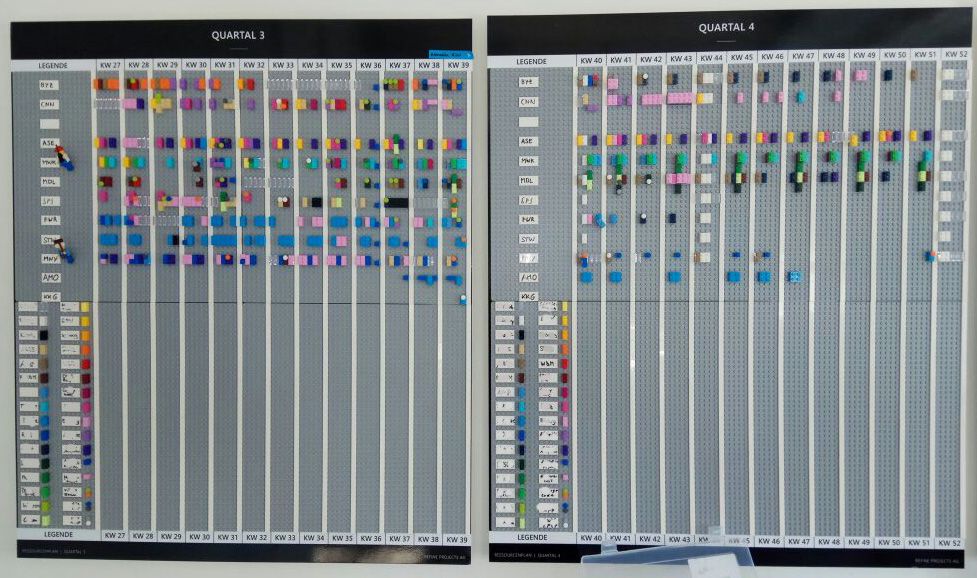How Visualizing Your Resources Can Lead to Better Flow and More Reliable Commitments
In an office, organizing the available resources and securing reliable commitments in the daily business is important. Especially in companies with different projects, an easy understandable overview of the resources allocation of the weekly work plan and the lookahead is very important. In our office we had a hard time organizing the team members that work on different projects away from the office. In some cases a team member becomes unavailable at short notice or there are changes in the projects which affect the allocation of staff. In these situations, you need to evaluate at a glance who is available instead of going through all the team’s calendars or asking each person one at a time.
HOW TO VISUALIZE YOUR RESOURCES
Visualising your resource lookahead schedule can easily be done through a board. The board should reflect which kind of resources are needed. Those resources can be for example your staff, subcontractors, or machines. The board must be adjustable to react to short-term changes and accessible to all team members.
To solve this problem, we reviewed several tools for organizing human resources. We ended up using Bit Planner (1) which is a solution based on LEGO® bricks. The board consisting of three rows of plates mounted on the wall, representing three months. Each board is divided into columns representing a day in the week. And every team member has his or her own line in the calendar. Different colored bricks represent different projects. Figure 1 shows the board being mounted and used in our office.

COORDINATION OF THE TEAM MEMBERS
Based on their calendar, we found a way to organize our resources. Since we have projects with long phases it was important for us to plan the upcoming year instead of just three months. Because of that our board is divided in four quarters (Figure 2), hanging at the wall of our office with the possibility to rotate the quarters as one is finishes.

As shown in Figure below the columns represent the weeks consisting of five days. Every team member has a line of two knops marked by a sign with the initials at the beginning of the line. We also color-coded every project. In the case that a team member is on a project for a whole day, a 2×1 stone with the corresponding color is placed. If the project is just half day, a 1×1 stone is placed. Besides the colors for projects, transparent stones mark vacations, white stands for holiday, and black represent sick days. Additionally, round 1×1 stones are used for special performance items (e.g. phase schedule sessions, the project end etc.) and placed above the project stones.

We organize our resource board collaboratively with the whole team in our Friday meeting. Every member of the team presents his following week and says if he or she needs support on a project. Afterwards the moderator of the meeting points out the following 3-4 weeks to see if there is a lack of resources at any point.
In our experience, the board is very helpful and supports efficient resource allocation. It is easy to see which person is responsible for which project. In the case that a team member is ill, you just check the board and identify if any team member doesn’t have a stone set on that particular day. This indicates which of the team members is available to fill in.
REFLECTION
The usage of the resource board simplified our resource planning remarkable. At a glance, you see what your colleagues are working on and if they are available. The projects are more tangible and the board is tactile and adjustable since the LEGO® bricks are movable. By implementing this board, we have never overbooked nor misallocated our most important resource, our time. With the visual management and without much effort, we can quickly see the whole picture and reallocate our time to handle any situation.
Bit Planner. (2018). Home. [online] Available at: http://www.bit-planner.com [Accessed 24 Jan. 2018].
